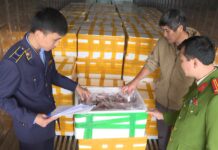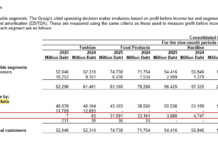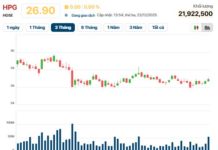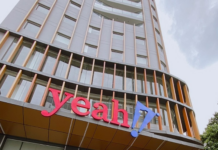Domestic Gold Ring Prices Slip Slightly
On the morning of August 21, domestic gold bar prices remained stable. Specifically, at 8:55 am, Saigon Jewelry Company (SJC) announced its gold bar buying and selling prices at 79-81 million VND per tael, maintaining the same rates as the previous day’s close.
DOJI Group listed its gold bar buying and selling prices at 79-81 million VND per tael, also unchanged from the previous day’s close.
While gold bar prices remained steady, gold ring prices slipped slightly. DOJI Group quoted its gold ring prices at 77-78.3 million VND per tael, a decrease of 50,000 VND per tael in both buying and selling rates compared to the previous day’s close.
Saigon Jewelry Company (SJC) listed its gold ring prices at 77-78.35 million VND per tael, a decrease of 50,000 VND per tael in the buying rate and an unchanged selling rate compared to the previous day’s close.

Gold bar prices remain stable while gold ring prices slip slightly
Global Gold Prices Hold Firm Above $2,500 per Ounce
In the trading session on August 20, global gold prices remained firmly above $2,500 per ounce due to tensions in the Middle East, a weakening US dollar, and growing investor expectations of an interest rate cut by the US Federal Reserve in September 2024.
Spot gold prices rose 0.3% to $2,510.35 per ounce, after briefly surging to a record high of $2,531.60 per ounce. Gold futures prices on the US market closed 0.4% higher at $2,550.6 per ounce.
A standard gold bar weighs 400 troy ounces, valuing it at over $1 million. Of course, not all gold bars weigh exactly 400 ounces. According to the US Gold Authority, gold bars are typically traded among central banks and gold dealers rather than individuals.
Gold prices have climbed over 20% since the start of the year and are on track for their strongest year since 2020. The rise in gold prices could indicate that investors anticipate an upcoming rate cut by the Fed.
As per the CME FedWatch Tool, there is a 71.5% probability that the Fed will cut interest rates by 25 basis points at its September meeting.
Meanwhile, central banks, led by the People’s Bank of China (PBoC), are also buying gold to reduce their dependence on the US dollar.
Central banks and investors view this precious metal as a long-term and reliable store of value during economic uncertainties. When interest rates fall, gold tends to become more attractive than bonds, driving up its price. Investors also consider gold as a hedge against inflation, expecting it to maintain its value as prices rise.
According to Aakash Doshi of Citi Research, gold prices could surge to $2,600 per ounce by the end of this year and reach $3,000 per ounce by mid-2025. The world’s largest gold exchange-traded fund, SPDR Gold Trust GLD, reported that its gold holdings had increased to 859 tons as of August 19, the highest level in seven months.
Market Update on February 3rd: Crude oil, gold, copper, iron and steel, and rubber all decline together.
At the close of trading on February 2nd, the prices of oil, gold, copper, steel, rubber, and coffee all saw a simultaneous decrease, with iron ore hitting a two-week low.









































